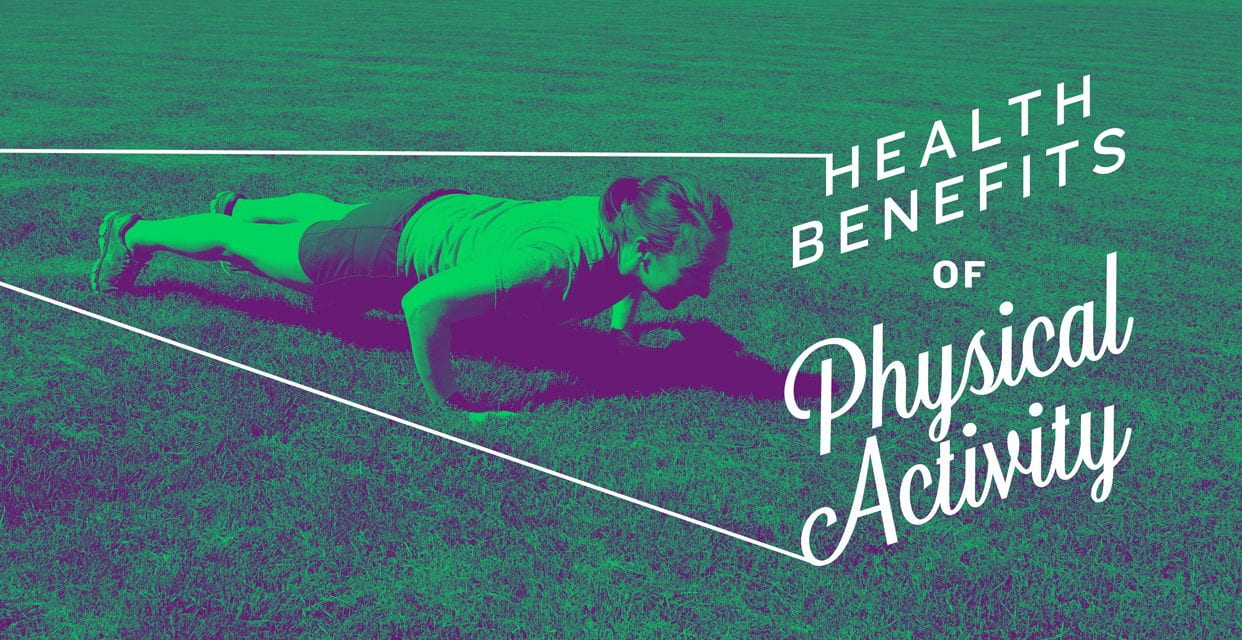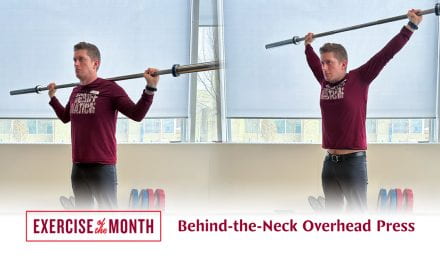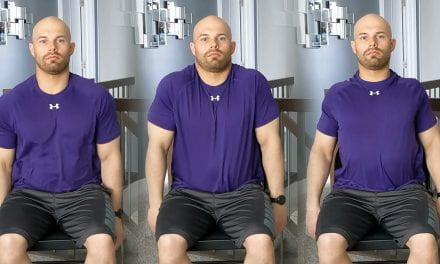The COVID-19 pandemic has had a toll not only on the physical health of the population but also a widespread toll on individual mental health.
The good news is that methods to improve physical health also have the added benefit of improving mental health. One such method is physical activity.
Physical activity is defined as any bodily movement produced by the contraction of skeletal muscles. It is an umbrella term that includes sports, leisure activities, dance, and physical exercise. Physical exercise is every planned, structured, repetitive, and purposeful intervention.[1]
Physiological Benefits
Some of the well-known physiological benefits of physical activity include reducing the risk of developing diabetes, hypertension, colon cancer (among other cancers), and heart disease. Helping build and maintain healthy bones, muscles, and joints as well as lowering morbidity and mortality rates are also physiological benefits of exercise.[2] A review of evidence revealed that prescribing exercise in 26 different chronic diseases proved therapeutically effective.[3]
Psychological and Emotional Benefits
Physical activity has been shown to enhance an individual’s general positive mood, improve self-esteem and self-concept. Reduction in feelings of depression, anxiety, and stress are further benefits of physical activity. Physical activity has also been shown to be therapeutically effective in the psychiatric diseases of depression, anxiety, stress, and schizophrenia.[4]
Physical Activity and Depression
When it comes to the benefits to mental health that physical activity provides, the most well-researched is the ability to reduce symptoms of depression. Depression is a common and important cause of morbidity and mortality worldwide. Depression is commonly treated with antidepressants and/or psychological therapy, but some may prefer alternative approaches such as exercise.[5] There are several possible mechanisms as to why depression can be both prevented and treated with physical activity.
Neuroplasticity: Exercise and physical activity stimulate the growth of new nerve cells and the release of proteins known to improve the health and survival of nerve cells. People with depression have reduced hippocampal volume.[6] Studies have also shown that physical activity has a possible direct positive effect on the hippocampus, specifically an increase in hippocampal volume.[7]
Inflammation: Several studies and research papers suggest that low-grade inflammation may play a role in the pathophysiology of depression.[8] Physical activity and exercise act through several pathways to create an anti-inflammatory environment.[9] [10]
Endorphins: It is hypothesized that the increase in release in endorphins (the body’s natural painkillers) during exercise improves mood and makes people feel better.[11]
Neurotransmitters: Serotonin, dopamine, noradrenaline and glutamate imbalances are often noted in the central nervous systems of people suffering from depression. Serotonin is the most commonly treated neurotransmitter imbalance with medication in people with depression. It is thought that exercise can also increase serotonergic and adrenergic levels in the brain, effectively acting in the same way as antidepressant medication.[12]
Neuroendocrine: Prolonged cortisol exposure may cause neurotoxicity and contribute towards structural brain changes and cognitive deficits associated with depression.[13] Habitual exercise leads to a blunting of cortisol. [14]
Mastery and Positive Feedback: Exercise is considered an activity that is part of a healthy lifestyle and engaging in exercises can lead to a positive cycle. The person engaging in the physical activity feels normal and derives a sense of accomplishment or mastery upon completing a task. Physical activity can give an individual a sense of greater self-worth or personal control over the environment.[15]
Distraction: The distraction hypothesis suggests that rather than physiological change produced by exercise, the mental ‘time out’ could be responsible for the mood-elevating effects of exercise and physical activity. Distracting oneself from negative and worrying thoughts is a technique used by some to help cope with depression.[16]
Physical Activity and Anxiety
Anxiety disorders are the most common mental health problem globally. Some of the mechanisms as to why physical activity can help prevent and treat anxiety overlap with the mechanisms of depression: distraction, mastery, positive feedback, and control over the external environment.
Self-Efficacy: People with anxiety can experience inner turmoil. This inner turmoil can manifest into physical symptoms such as increased breathing rate, heart rate, and sweating. During physical activity, the heart rate increases, and perspiration occurs. Experiencing these physiological changes in the context of regular physical activity may give the anxious individual the significant insight that a high pulse and sweating are not dangerous. [17]
Physical Activity and Stress
Stress is a common occurrence in everyday life, and repeated or traumatic stress can be a factor for illnesses of the central nervous system and other body systems. Stress alone is not a disease, but long‐term stress can lead to illness. Some evidence suggests that regular exercise and being physically fit can reduce stress levels. The higher the fitness level of an individual, they tend to perceive stress at a lower degree. [18]
Distraction: Some studies suggest that physical activity acts as a distraction that diverts an individual’s psychological stress.[19]
Dosage
Current evidence-based guidelines for physical activity for Canadians can be found via The Canadian Society for Exercise Physiology (CSEP): CANADIAN 24-HOUR MOVEMENT GUIDELINES.
- Children and Youth (Ages 5-17)
- Moderate to Vigorous Physical Activity-An accumulation of at least 60 minutes per day of moderate to vigorous physical activity involving a variety of aerobic activities. Vigorous physical activities and muscle and bone-strengthening activities should each be incorporated at least three days per week.
- Light physical activity– Several hours of a variety of structured and unstructured light physical activities.
- Adults (Ages 18-64)
- Moderate to vigorous aerobic physical activities such that there is an accumulation of at least 150 minutes per week. Muscle-strengthening activities using major muscle groups at least twice a week.
- Several hours of light physical activities, including standing.
- Adults (Ages 65+)
- Performing a variety of types and intensities of physical activity, which includes.
- Moderate to vigorous aerobic physical activities such that there is an accumulation of at least 150 minutes per week.
- Muscle-strengthening activities using major muscle groups at least twice a week.
- Physical activities that challenge balance.
- Several hours of light physical activities, including standing.
- Performing a variety of types and intensities of physical activity, which includes.
Getting Started
There is no need to dedicate hours out of your busy day to train at the gym, spend money on expensive home gym equipment, or run endless kilometers to reap all the physical and mental health benefits of exercise. You can break down the physical activity recommendations into smaller time intervals: two 15-minute or even three 10-minute exercise sessions.
Even a little bit of activity is better than nothing. It is crucial to decrease the amount of sedentary time.
If you do not have time for 15 or 30 minutes of continuous exercise, or if your body tells you to take a break after 5 or 10 minutes, try not to get discouraged. Start with 5- or 10-minute sessions and slowly increase your time. The more you exercise, the more energy you will have, and eventually, you feel ready for a little more activity. The key is to commit to some moderate physical activity on most days to help develop exercise as a habit. Then, you can slowly add more time or try different types of activities.
Summary
Physical Activity is a method to improve physical health and the added benefit of also improving mental health. Known physiological benefits of physical activity include reducing the risk of developing diabetes, hypertension, colon cancer (among other cancers), and heart disease, helping build and maintain healthy bones, muscles, and joints, and lowering morbidity and mortality rates. Physical activity has been shown to enhance an individual’s general positive mood, improve self-esteem and self-concept. Reduction in feelings of depression, anxiety, and stress are further benefits of physical activity. Physical activity is therapeutically effective in the psychiatric diseases of depression, anxiety, stress, and schizophrenia. To take advantage of these physical and mental health benefits, adults should exercise vigorously for around 150 minutes per week.
Contact our personal trainers for help and guidance getting going or continuing your fitness journey, or our athletic therapists for injury prevention advice, functional movement screening, as well as assessments and treatments of nagging injuries to keep you active!
By Meaghan
Meaghan is a full-time athletic therapist serving the MacEwan Griffins varsity athletes, students, staff and the community. Meaghan completed her undergraduate degree in Honours Kinesiology from McMaster University in 2007 and continued her education at Sheridan College, graduating from the Athletic Therapy program in 2011 and her Masters of Rehabilitation Science from McMaster University in 2018.
[1] Wegner, M., Amatriain-Fernández, S., Kaulitzky, A., Murillo-Rodriguez, E., Machado, S., & Budde, H. (2020). Systematic Review of Meta-Analyses: Exercise Effects on Depression in Children and Adolescents. Frontiers in psychiatry, 11, 81. https://doi.org/10.3389/fpsyt.2020.00081
[2] Lox, C. L., Martin Ginis, K. A., Gainforth, H. L., & Petruzzello, S. J. (2006). The Psychology of Exercise: Integrating Theory and Practice (2nd ed.). Holcomb Hathaway
[3] Pedersen, B.K. and Saltin, B. (2015), Exercise as medicine – evidence for prescribing exercise as therapy in 26 different chronic diseases. Scand J Med Sci Sports, 25: 1-72. https://doi.org/10.1111/sms.12581
[4] Pedersen, B.K. and Saltin, B. (2015), Exercise as medicine – evidence for prescribing exercise as therapy in 26 different chronic diseases. Scand J Med Sci Sports, 25: 1-72. https://doi.org/10.1111/sms.12581
[3] Campbell S, Marriott M, Nahmias C, MacQueen GM. (2004). Lower hippocampal volume in patients suffering from depression: a meta‐analysis. Am J Psychiatry , 161: 598–607.
[4] Pajonk FG, Wobrock T, Gruber O, Scherk H, Berner D, Kaizl I, Kierer A, Muller S, Oest M, Meyer T, Backens M, Schneider‐Axmann T, Thornton AE, Honer WG, Falkai P. Hippocampal plasticity in response to exercise in schizophrenia. Arch Gen Psychiatry 2010: 67: 133–143.
[5] “ “
[6] Campbell S, Marriott M, Nahmias C, MacQueen GM. (2004). Lower hippocampal volume in patients suffering from depression: a meta‐analysis. Am J Psychiatry , 161: 598–607.
[7] Pajonk FG, Wobrock T, Gruber O, Scherk H, Berner D, Kaizl I, Kierer A, Muller S, Oest M, Meyer T, Backens M, Schneider‐Axmann T, Thornton AE, Honer WG, Falkai P. Hippocampal plasticity in response to exercise in schizophrenia. Arch Gen Psychiatry 2010: 67: 133–143.
[8] Kandola, A., Ashdown-Franks, G., Hendrikse, J., Sabiston, C. M., & Stubbs, B. (2019). Physical activity and depression: Towards understanding the antidepressant mechanisms of physical activity. Neuroscience & Biobehavioral Reviews, 107, 525–539. https://doi.org/10.1016/j.neubiorev.2019.09.040
[9] Pedersen, B. K. (2017). Anti-inflammatory effects of exercise: Role in diabetes and cardiovascular disease. European Journal of Clinical Investigation, 47(8), 600–611. https://doi.org/10.1111/eci.12781
[10] Gleeson, M., Bishop, N.C., Stensel, D.J., Lindley, M.R., Mastana, S.S., Nimmo, M.A. (2011) The anti-inflammatory effects of exercise: mechanisms and implications for the prevention and treatment of disease. Nat. Rev. Immunol., 11 (9), 607-615, DOI: 10.1038/nri3041
[11] Mikkelsen, K., Stojanovska, L., Polenakovic, M., Bosevski, M., & Apostolopoulos, V. (2017). Exercise and mental health. Maturitas, 106, 48–56. https://doi.org/10.1016/j.maturitas.2017.09.003
[12] “ “
[13] Kandola, A., Ashdown-Franks, G., Hendrikse, J., Sabiston, C. M., & Stubbs, B. (2019). Physical activity and depression: Towards understanding the antidepressant mechanisms of physical activity. Neuroscience & Biobehavioral Reviews, 107, 525–539. https://doi.org/10.1016/j.neubiorev.2019.09.040
[14] S. Heijnen, B. Hommel, A. Kibele, L.S. Colzato (2016). Neuromodulation of aerobic exercise-a review Front. Physiol., 6. 1-6, 10.3389/fpsyg.2015.01890
[15] Kandola, A., Ashdown-Franks, G., Hendrikse, J., Sabiston, C. M., & Stubbs, B. (2019). Physical activity and depression: Towards understanding the antidepressant mechanisms of physical activity. Neuroscience & Biobehavioral Reviews, 107, 525–539. https://doi.org/10.1016/j.neubiorev.2019.09.040
[16] Mikkelsen, K., Stojanovska, L., Polenakovic, M., Bosevski, M., & Apostolopoulos, V. (2017). Exercise and mental health. Maturitas, 106, 48–56. https://doi.org/10.1016/j.maturitas.2017.09.003
[17] Pedersen, B.K. and Saltin, B. (2015), Exercise as medicine – evidence for prescribing exercise as therapy in 26 different chronic diseases. Scand J Med Sci Sports, 25: 1-72. https://doi.org/10.1111/sms.12581
[18] Pedersen, B.K. and Saltin, B. (2015), Exercise as medicine – evidence for prescribing exercise as therapy in 26 different chronic diseases. Scand J Med Sci Sports, 25: 1-72. https://doi.org/10.1111/sms.12581
[19] Scott MG. (1960). The contributions of physical activity to psychological development. Res Q: 31: 307–320.





